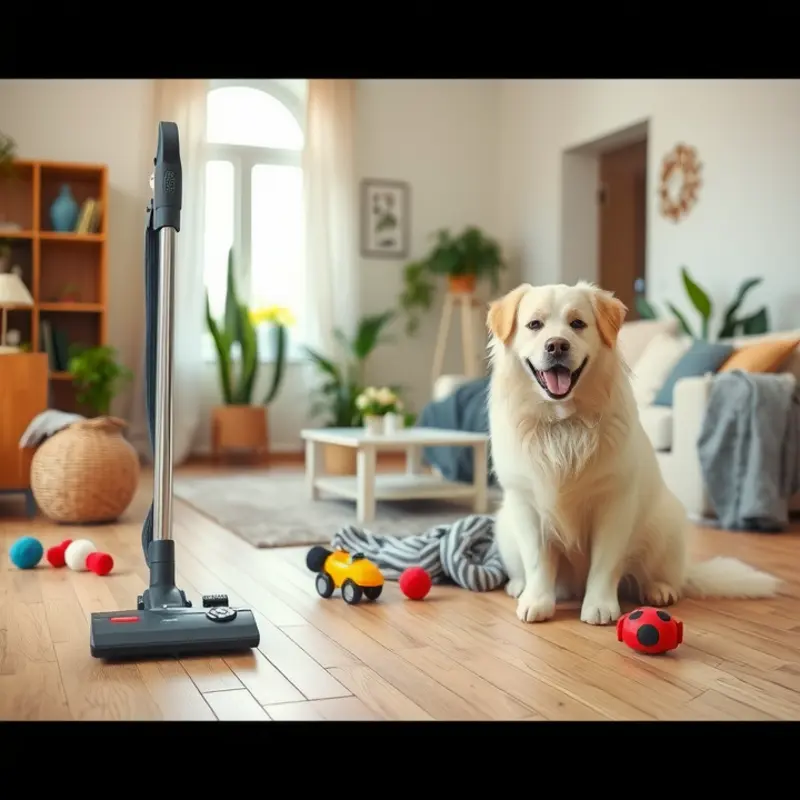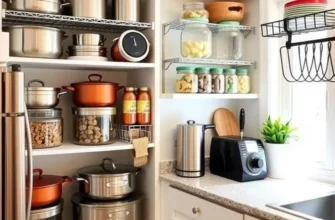Living in an apartment with furry companions can be a blast! Whether you’re a young professional, a couple, or a blossoming family, the joys of cushy dog snuggles or a cat’s gentle purr can melt away the stresses of city life. However, sharing your cozy space with pets also comes with a set of unspoken rules—and let’s be honest, who’s got time for awkward neighbourly confrontations? The good news is that mastering apartment pet etiquette doesn’t have to feel like solving a Rubik’s Cube. With some relatable tips and a dash of humor, you and your pets can become the most beloved residents on the block. Ready to navigate the paw-sitive pathways of apartment living? Let’s jump in and explore how to keep the peace (and the hairball-throwing drama) at bay!
Noise Control: Avoiding the Bark-o-late Band

Living in an apartment with pets often demands a delicate balance between companionship and courtesy. One prevalent challenge is managing the noise your furry friends make. Specifically, barking dogs can easily become an issue if not properly addressed, causing tension among neighbors who share thin walls and floors.
Understanding the Cause:
The first step is to understand why your dog is barking. Is it boredom, anxiety, or a method to alert you to possible threats? Recognizing the cause helps in tailoring solutions. Often, pets bark because they are anxious about being alone. Others may respond to external stimuli like passing cars or chatting neighbors.
Training Approaches:
Proper training is vital to manage your pet’s noise levels. Start with positive reinforcement techniques to encourage desired behavior. Reward your dog with treats or affection when they remain quiet in response to specific commands. Consistency is key; regular practice sessions can teach your pet what behavior is expected.
Command training is another effective technique. Use simple commands like “quiet” when your dog starts barking unnecessarily. Follow through by rewarding compliance. Over time, your pet will understand that quietude results in positive rewards, gradually reducing random nuisance barking.
Creating a Comforting Environment:
Ensuring your pet feels secure can dramatically reduce anxiety-induced barking. Create a dedicated space for your pet, enriched with familiar objects, comfortable bedding, and chew toys. Chew toys are particularly useful as they tend to divert your pet’s attention from environmental sounds to their playthings, allowing them to relax.
Regular exercise is also essential. A well-exercised dog is often a tired and content dog, less likely to become restless and vocal. Incorporate daily playtime and walks into your routine to expend energy healthily, reducing the likelihood of unwanted barking.
Building a Community Connection:
Fostering good relationships with neighbors can mitigate potential conflicts. Let your neighbors know you’re working on controlling your pet’s noise. Open lines of communication encourage them to approach you if there’s a problem. This not only helps in addressing issues promptly but also shows them you are considerate of their comfort.
Consider organizing or joining neighborhood pet meet-ups. Community events can foster friendships both for you and your pet, allowing your dog to become familiar and friendly with neighbors and their pets. This familiarity can cut down on reactive barking at other tenants.
The Apartment Pet Socialization guide offers additional insights into ensuring your pet harmonizes well with apartment life, making these social interactions more beneficial.
Ultimately, a combination of training, environment adjustment, and community building aids in maintaining a peaceful apartment atmosphere, ensuring that your pet’s presence is a joy for you and not a burden for others. By undertaking these strategies, you can enjoy the joys of pet ownership while staying on good terms with your neighbors.
Cleaning & Maintenance: The Hairy Truth

Living with pets in a compact apartment demands creative strategies to maintain cleanliness and harmony. With a few smart tactics, you can manage pet hair, surprise stains, and that elusive pet odor. The goal is to ensure your home remains a pleasant environment for both you and your furry companions.
Grooming Routines
Regular grooming is your first line of defense against pet hair. A consistent grooming routine reduces the amount of shedding and helps alleviate allergies by removing dander. For cats, a weekly brushing session can make all the difference. Dogs, depending on their coat type, might need brushing every few days. Invest time in these sessions; it’s not just about cleanliness but bonding too.
Preventing Hairy Situations
To combat stray hairs, floor coverings play a crucial role. Choose materials like hardwood or tile flooring, which don’t trap hair and are easier to clean than carpets. If your apartment comes with carpeting, consider using area rugs made from pet-friendly materials, which can be easily beaten out or washed.
Mystery Stains and Odors
Tackling mystery stains requires quick and efficient action. Use a simple mixture of water and mild detergent to address most spots. If you’re dealing with odor, ensure you ventilate the space regularly. A few strategically placed air purifiers can help maintain fresh indoor air. Odor-neutralizing sprays provide immediate relief, but remember to check that they’re safe for pets.
Pet-Proof Cleaning Hacks
For those persistent hairs on fabrics, a simple pair of rubber gloves works wonders. Dampen them slightly and run your hands over furniture or clothing. Alternatively, fabric softener sheets can attract fur from fabric couch covers and other textile surfaces. For floors, a weekly vacuuming schedule should suffice, but in high-shedding seasons, you might want to up the frequency.
Furniture and Layout Considerations
Modify your space to be pet-friendly while maintaining style. Choose furniture with removable covers for easy washing. While it might be tempting to fill every corner with pet accessories, ensure pathways are clear to avoid clutter and accidents.
The Art of the Gentle Disclaimer
When guests arrive, inform them humorously about the potential of encountering a stray tuft of fur. Phrases like “Our cat adds character to the couch” or “Consider the fuzz a symbol of comfort” can set the right tone. This approach embraces the charm of your pet-filled life and maintains transparency with visitors.
For those with special needs or nervous pets, socialization tips can serve as an essential guide. Additional insights can be found in the guide on apartment pet socialization, ensuring a well-rounded approach to harmonious pet-keeping.
Ultimately, creating a balance between cleanliness and pet companionship is an art. With thoughtful strategies and a bit of humor, your apartment can be both a sanctuary for your furry friend and a welcoming space for you and your guests.
Final words
Being a pet parent in an apartment doesn’t need to resemble a chaotic sitcom episode. With a sprinkle of consideration, a dash of training, and an unwavering commitment to maintaining harmony with your neighbors, you can create an environment where both you and your furry friend can thrive. Embrace the quirks and joys of apartment life with pets, and remember: a little etiquette goes a long way in turning your cozy nook into a paradise for all. So, unleash the good vibes and enjoy the cuddly companions in your apartment life!









